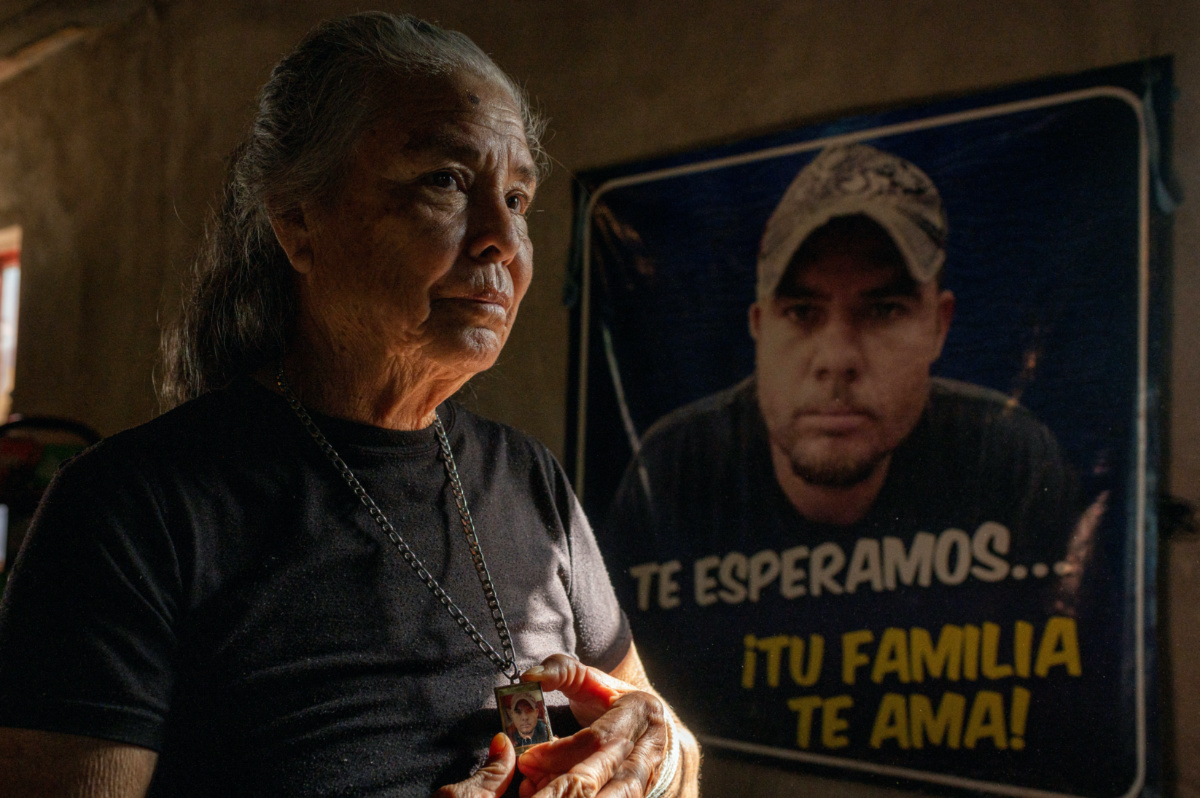
STEFANIE ESCHENBACHER and MAHE ELIPE, of Reuters, report on how families are involved in the ongoing search to find the more than 100,000 people missing in Mexico…
Los Mochis, Mexico
Reuters
Manki Lugo no longer remembers how many dead bodies she has found in the seven years she has searched across northern Mexico for her son.
What she cannot forget are the moments her hopes were dashed and it was – once again – not Juan.
The engraved wedding band clinging to the finger of one skeleton. Or the moon-shaped tattoo, by then barely visible on the decomposing skin of an arm.
“When we find a body, or parts, I pray that it’s him,” said the 68-year-old with white hair as she sat on the patio of her wooden home. “So that I can finally find peace.”

Manki Lugo, 68, stands in front of a portrait of her missing son Juan, in Los Mochis, Sinaloa, Mexico, on 9th December, 2021. Juan, then 33, disappeared in July, 2015, and a month later Lugo joined a local search group ‘Las Rastreadoras del Fuerte’, or the Trackers of El Fuerte. PICTURE: Reuters/Mahe Elipe
After Juan, then 33, disappeared in July, 2015, Lugo joined a local search group “Las Rastreadoras del Fuerte,” or the Trackers of El Fuerte – named after the town in northern Sinaloa state where the group found one of its first mass graves.
The group of mostly women spends hours under scorching sun, combing dense vegetation for the clandestine burial sites that hide the missing dead or searching riverbanks for bodies washed up with sewage.
“When we find a body, or parts, I pray that it’s him So that I can finally find peace.”
– Manki Lugo, whose son Juan, then 33, disappeared in July, 2015.
To make identification harder, sometimes only the limbs of several different victims are buried together. Their heads and torsos are hidden elsewhere.
Sometimes, in their hunt, they chase a hopeful putrid stench into a bog or woodland, only to find a dead animal buried under trash.
In May, the number of missing people across Mexico passed 100,0000 – many of them victims of the country’s relentless drug-related violence.
And the number of missing continues to rise, now reaching 105,879, with many experts and Mexican officials believing the true number is even higher.
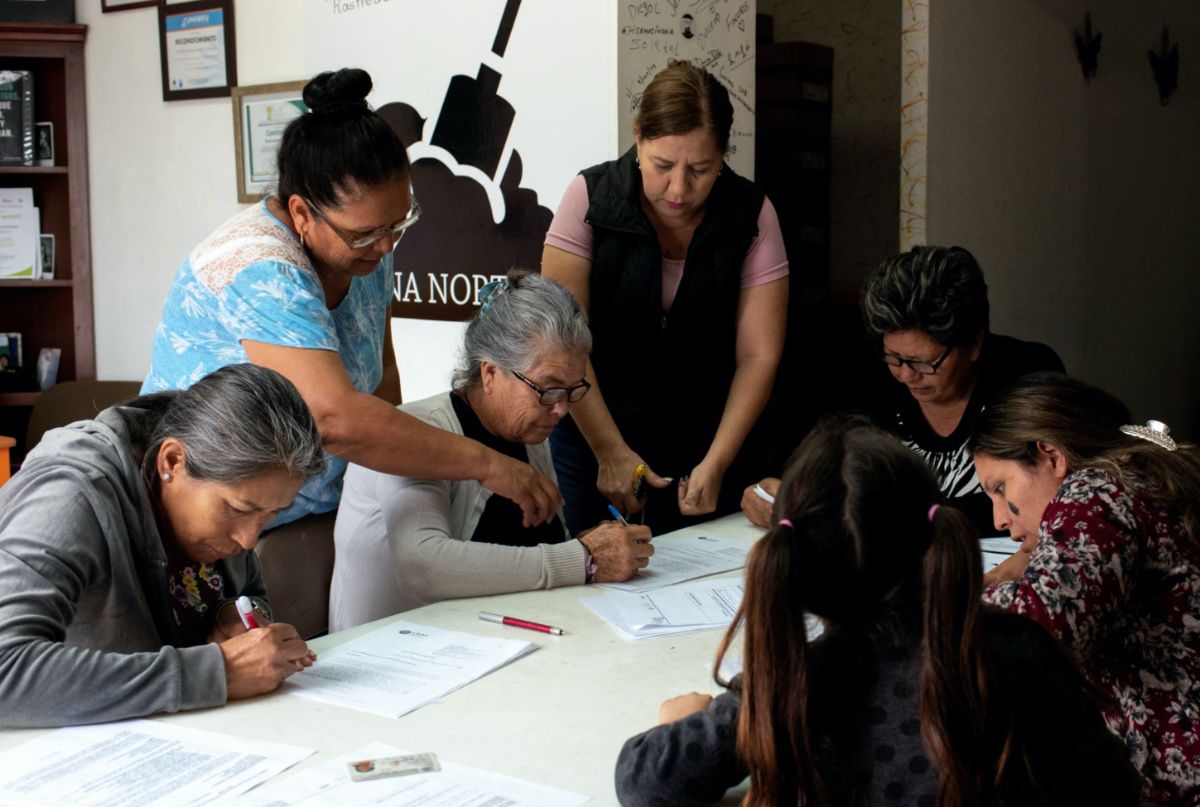
People gather around a help desk for the family of missing people run by ‘Las Rastreadoras del Fuerte’ in Los Mochis, Sinaloa, Mexico, on 26th November, 2019. Thanks to determination of leader Mirna Medina, 52, ‘Las Rastreadoras del Fuerte’ is now considered a civilian group, which will allow them to receive financial support to continue their work. Since the creation of the group in 2014, they have found more than 400 bodies. PICTURE: Reuters/Mahe Elipe
The desperate search of groups like Las Rastreadoras del Fuerte sheds light not only on the suffering caused by the violence but also the lack of faith in the ability of authorities to combat it.
Reuters spent four years documenting the work of these groups across 10 Mexican states. In Mexico, around 180 such groups have sprung up, some composed of as few as two people or a single family.
Many family members, afraid of eroding public sympathy, were reluctant to discuss if the missing were involved with drugs or crime. Sinaloa, on Mexico’s northern Pacific coast, is home to one of the world’s largest drug-trafficking organisations – the Sinaloa Cartel.
Mexican officials would not comment on individual cases in this story, saying investigations were ongoing.
Most of Mexico’s missing have disappeared since 2006, when then-President Felipe Calderon declared a “War on Drugs”, sending in the armed forces to fight the increasingly powerful cartels and unleashing a wave of violence that continues to roil the country.
Since then, nearly 400,000 people have been murdered.
The women of Las Rastreadoras del Fuerte have found 423 bodies, according to their records. But only 218 of those could be identified and returned to families.
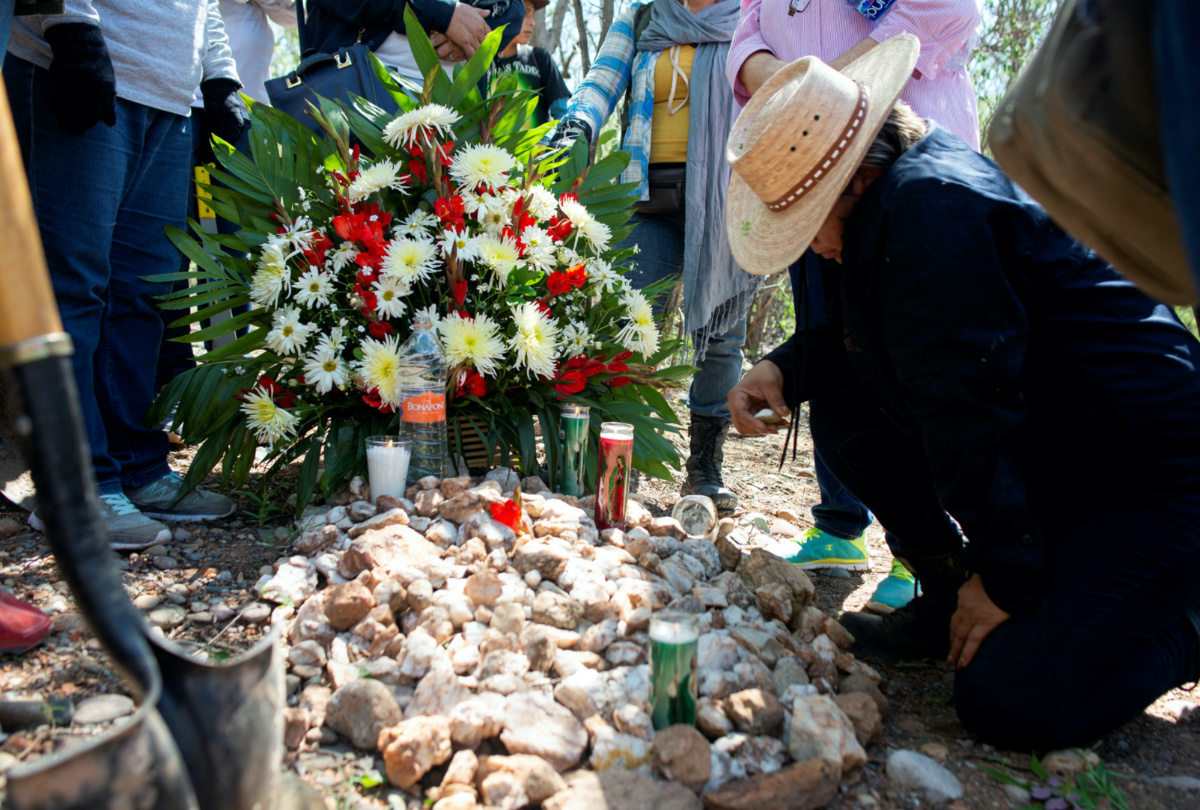
The founder of the search group ‘Las Rastreadoras del Fuerte’, Mirna Medina, 52, carries a wreath of flowers during the commemoration of the discovery of her son Roberto’s body, in El Fuerte, Sinaloa, Mexico, on 13th July, 2018. PICTURE: Reuters/Mahe Elipe
Few of the women in the group have found what they are looking for.
One who has is Mirna Medina, who founded the group in the sweltering Sinaloan town of Los Mochis after her son Roberto went missing when he was 21 in July, 2014.
A 52-year-old mother with short, highlighted hair, Medina is often teased by the group for her brightly manicured nails – so out of place when digging for the lost dead.
In her living room, which doubles as a bustling meeting spot for her work, Medina recalled how after three years of searching she unearthed bits of spine and part of an arm, in a remote part of El Fuerte about 100 kilometres from her home. DNA tests matched them to Roberto.
We rely on our readers to fund Sight's work - become a financial supporter today!
For more information, head to our Subscriber's page.
Later the same year, she found part of his foot nearby. And during a third search, three years later, she found the other foot as well as part of his trousers.
Even after finding Roberto, Medina keeps searching.
“I made a promise to Roberto, back then, that I would search for him until I found him,” she said. “Now we make that promise to each other [as a group], that we won’t rest until we find all our children.”
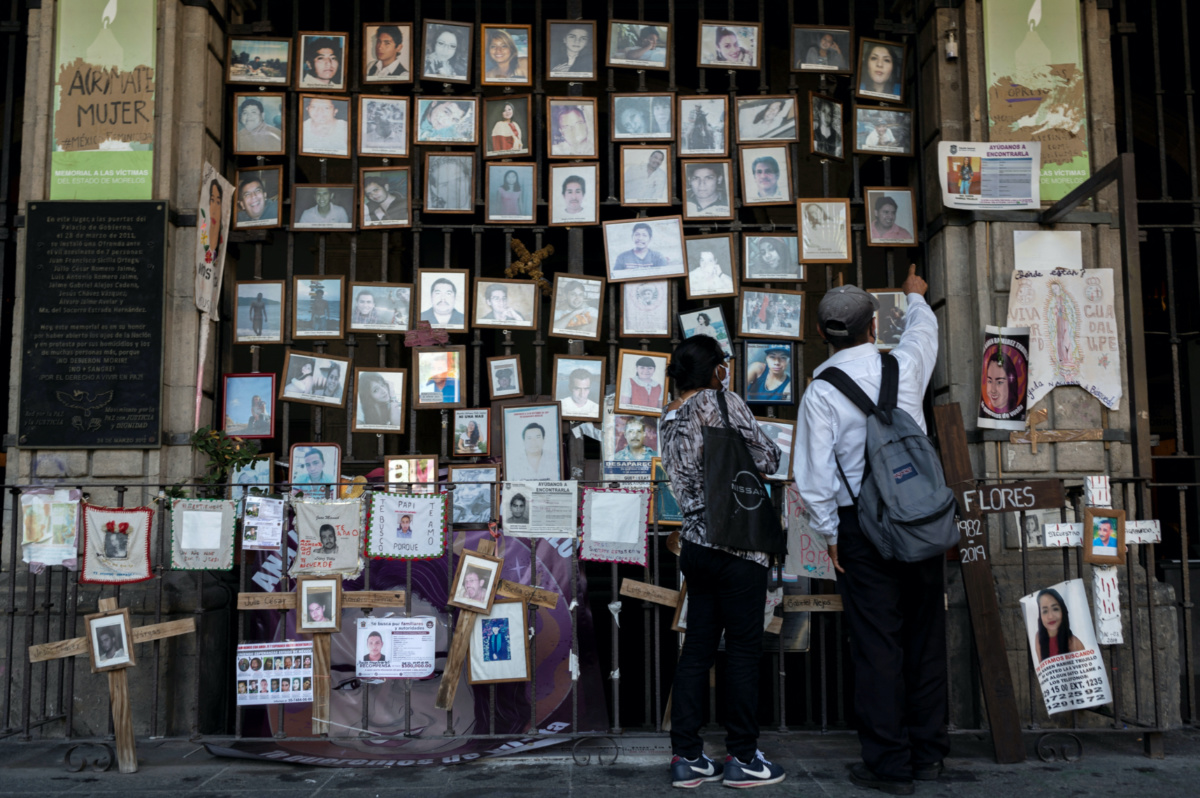
Passersby look at portraits of missing people displayed during a peaceful march organised by the ‘VI National Brigade for the Search for the Disappeared’, in the Plaza de Armas in the city of Cuernavaca, Morelos, Mexico, on 10th October, 2021. PICTURE: Reuters/Mahe Elipe
Jessica Higuera, 43, joins Las Rastreadoras del Fuerte on the days she can take off work at a local gas station.
Her older son Javier, then aged 19, went missing four years ago.
Higuera had just finished ironing his favorite shirt and kissed him goodbye on the cheek, reminding him to “be a gentleman” as he left for the birthday party of a neighbourhood girl.
She later learned that Javier and a friend had stolen a motorbike after the party. Then, his friends told her, they were abducted and never seen again.
“Of course, I would like to hope that he walks through this door one day… But I don’t think so,” she said sat at the kitchen table. Two dogs scuttled about, strays she rescued off the streets.
For some, the search does not end when a body is found.
Mayra Gonzalez, 48, had searched for her younger sister across three Mexican states with another group for more than two years.
One day while putting up search posters in a remote town far from her home, a group of women told her of a body uncovered in nearby forest.
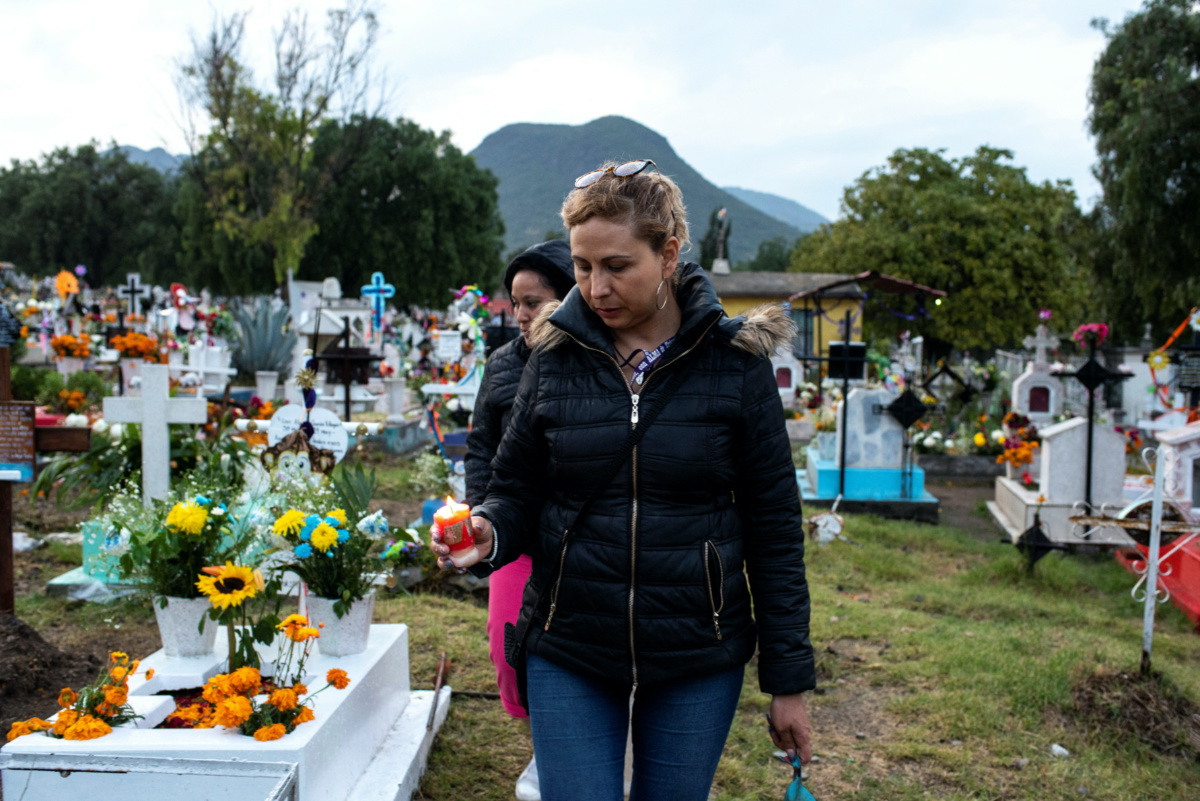
Mayra Gonzalez, 48, visits the grave of her sister Gloria Gonzalez to adorn it with flowers in Ecatepec, Mexico State, Mexico, on 5th November, 2019. Gloria Gonzalez disappeared in August, 2016, and was later found buried in a forest. PICTURE: Reuters/Mahe Elipe.
Local authorities in Hidalgo state had been unable to identify the body, but Gonzalez believed it could be her sister Gloria who had gone missing in 2016, aged 38, while traveling across the neighboring state of Puebla, in central Mexico.
After the body was released from the morgue, Gonzalez demanded authorities do DNA tests. “I was worried they would hand me over any body, just to close the case,” she said. The tests confirmed it was her sister Gloria.
But some things still did not quite add up.
After analysing the case files, Gonzalez said she noticed bones were missing from the body. It turned out authorities had only partially removed Gloria’s body from the forest where she was found, leaving some parts behind. She fought to have the rest of the remains recovered.
Gonzalez also requested an independent autopsy, which found inconsistencies with the official report that listed just one bullet impact wound. The independent autopsy found three.
“We didn’t trust the authorities,” Gonzalez said sitting at a roadside cafe near her home in Mexico State.
Gonzales filed a complaint to the state human rights commission about the way authorities had mishandled her sister’s case. An investigation was opened and is ongoing.
A man has been arrested in connection with the disappearance and killing of her sister. The cases have not been made public because the investigations are ongoing.
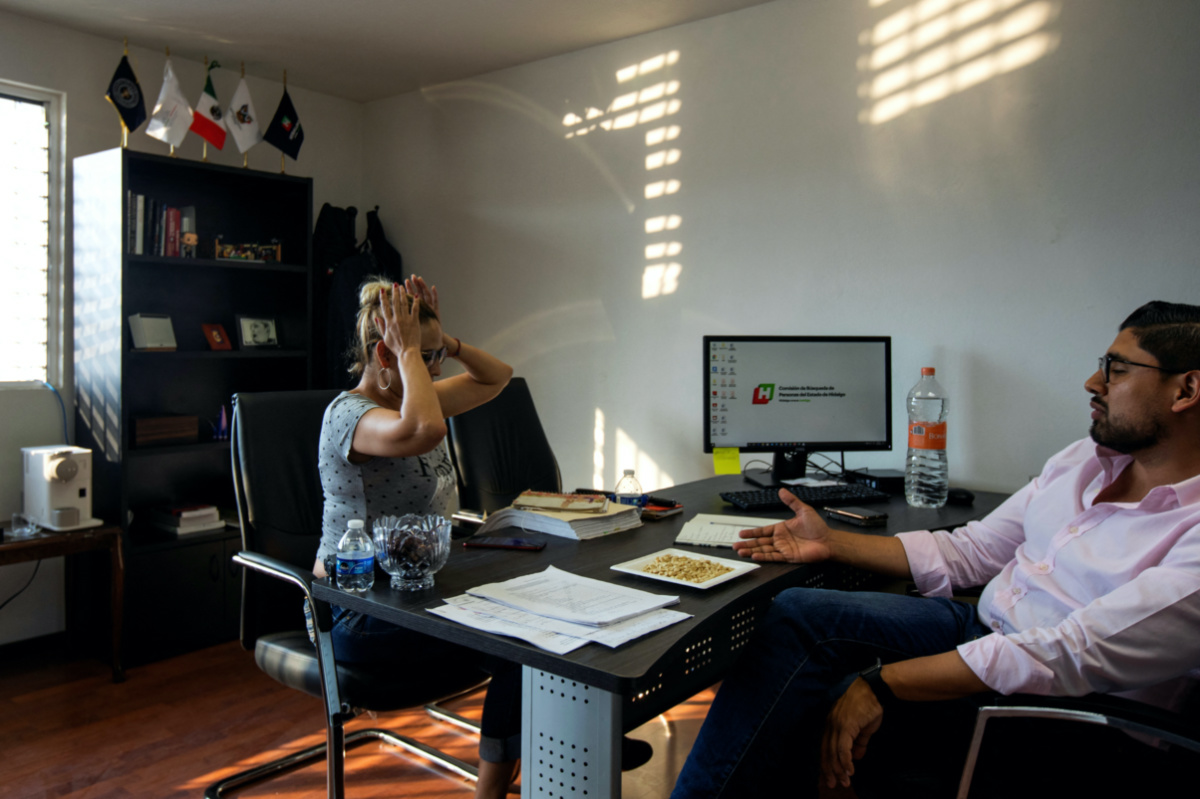
Mayra Gonzalez, 48, speaks at the Commission for the Search of Missing Persons of the state of Hidalgo in Pachuca, Hidalgo, Mexico, on 26th March, 2020. PICTURE: Reuters/Mahe Elipe
In 2019, Gonzales returned to university to study for a law degree. She is now months away from graduating.
“After seeing so much injustice, I started studying law,” Gonzalez said. “It’s not just to get justice for Gloria but for everyone who comes after me.”
– Additional reporting by JESUS BUSTAMANTE






